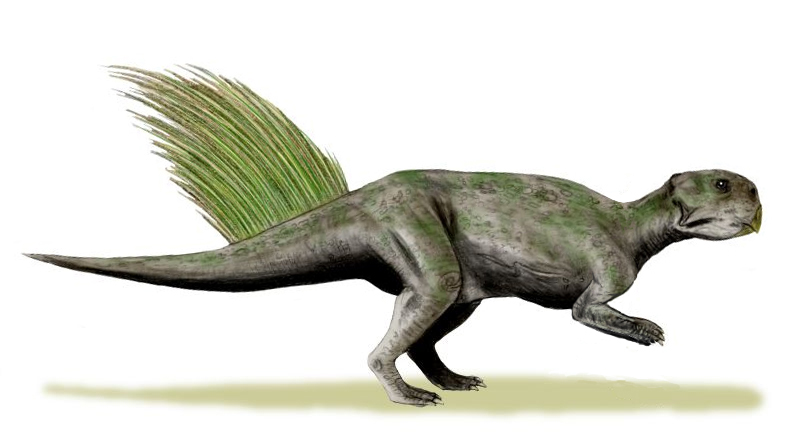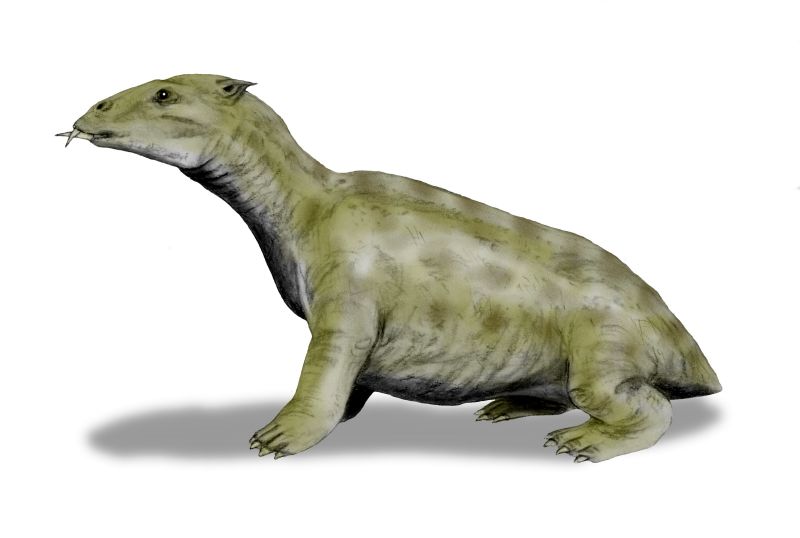While the majority find the game really fun to play (myself included), fans of paleontology may cry upon seeing a lot of the ways the creatures are depicted.
Me? As much as I'd like to see the Utahraptor with proper feathers (the game devs said they couldn't render feathers well back then, which makes me wonder about the dodos) and the Quetzalcoatlus as a ground hunter (Seriously game? Did you HAVE to waste such a perfect opportunity for one of the most terrifying enemies?), I'm fine with most of the inaccuracies. Mostly the stuff that makes the gameplay more fun, like the Oviraptor releasing a pheromone that makes dinosaurs lay eggs.
Anyways, what impresses me about the game is the fact that so many amazing and seldom-seen prehistoric creatures have made it in. (How often are you going to see a Thylacoleo or a Pelagornis in fiction?) And I've been coming up with my own ideas of what kind of creatures should be added. Each creature already in the game has a unique role, and I'm going to try to do that with my ideas.
And who knows? Maybe my predictions will come true in the future. So, without further ado, here are my creatures I'd like to see in ARK: Survival Evolved.
Tanystropheus
Credit goes to Mark Witton
Let's start out with everyone's favorite Triassic long-necked weirdo.
This is a very interesting creature that can be seen in virtually every book on prehistoric life. It was described by both Mark Witton and Trey the Explainer as a reptilian heron.
I imagine if you tamed it in ARK, it would behave as a living fishing rod, catching fish for you from the safety of the shore. Now, they introduced fishing rods in the game in a very recent (at the time of this writing) post, but I imagine Tany would work in a very similar way.
Macrauchenia
I imagine it being not only an incredibly fast creature, but also having incredible stamina, being able to run for quite a long time. If you tamed it (if you could catch it first), it would make a very helpful mount.
Psittacosaurus
I imagine the quills on this primitive ceratopsian were, in real life, quite soft and mostly used for display purposes.
But in ARK, I think they would be sharp, like porcupine quills. And if you tamed one, you could harvest quills from it, put narcoberries on them, and use them as tranquilizer darts, which would certainly be helpful in taming creatures faster.
Livyatan melvillei
In fact, I'm surprised Livyatan hasn't made it in pop culture yet. (Other than Ice Age 4.) It's a giant monster whale with enormous teeth in both its upper and lower jaw. It's basically a real life version of Monstro from Pinocchio.
Megaladapis
I'm also surprised the giant lemurs from ancient Madagascar haven't appeared yet, even in documentaries.
I imagine if you tamed a Megaladapis, you could ride it up the side of a tree, and it could be given the ability to bore into a tree with one finger like an aye-aye, so you could harvest sap.
What would you do with sap? I have no idea.
Anomalocaris
Yet another creature I'm surprised hasn't been announced yet. I mean, this guy is really popular in paleo documentaries and books.
I'm still trying to figure out what it would do though. My best guess is that it would harvest oil and chitin from trilobites.
Aurochs
I don't think having more recently extinct creatures in the game would be that big a deal, considering that they have both the dodo and the still-living coelacanth.
I came up with the idea that you could use it for milk, and my brother suggested you could feed the milk to the baby animals to help them grow faster. That would certainly be helpful, considering how annoying it is waiting for them to grow up.
Deinocheirus
This creature is so dang weird-looking that I'm surprised it hasn't appeared in pop culture yet. (Though that could be due to it being really new. After all, we didn't find the full remains until 2014.)
What would it do it ARK? I came up with the idea that it would harvest seaweed from the land. (What you would do with seaweed, I have no idea.) My brother suggested you could use it to harvest mushrooms and flowers in the wetlands, and it would have a higher change of getting rare ones than the other mounts.
Desmostylus
The desmostylians are another group of creatures so weird I'm surprised they haven't appeared in pop culture yet.
I was thinking that in ARK, you could tame it and then ride it on the bottom of the ocean floor to harvest seaweed. (Once again, what would you do with seaweed?)
Repenomamus
This guy is usually described as the Cretaceous equivalent of a wolverine, honey badger, or Tasmanian devil, and I can actually see it behaving like that in ARK.
I can see it attacking creatures much larger than itself, including something as large as a Giganotosaurus. A lot of times this would be helpful, but a lot of times this would get it killed.
Palaeophis
Credit goes to JWArtwark
Yet ANOTHER creature I'm surprised is so rare in even documentaries. Why is this? This is a giant marine snake that survived the Cretaceous mass extinction! (Though, granted that may have been one of the smaller species that evolved into a larger one.)
Anyways, my best idea for an ARK version of this guy would be that it would wrap itself around large marine creatures like mosasaurs, holding them still so they're easier to tame. But I'm just throwing stuff out there.
----
So, that's all I have for now. I may update this and add some more.
So, any thoughts? Are there any creatures YOU'D like to see in the game? Do you have any suggestions for the ones I came up with? Please comment if so!













_NOAA.jpg)












